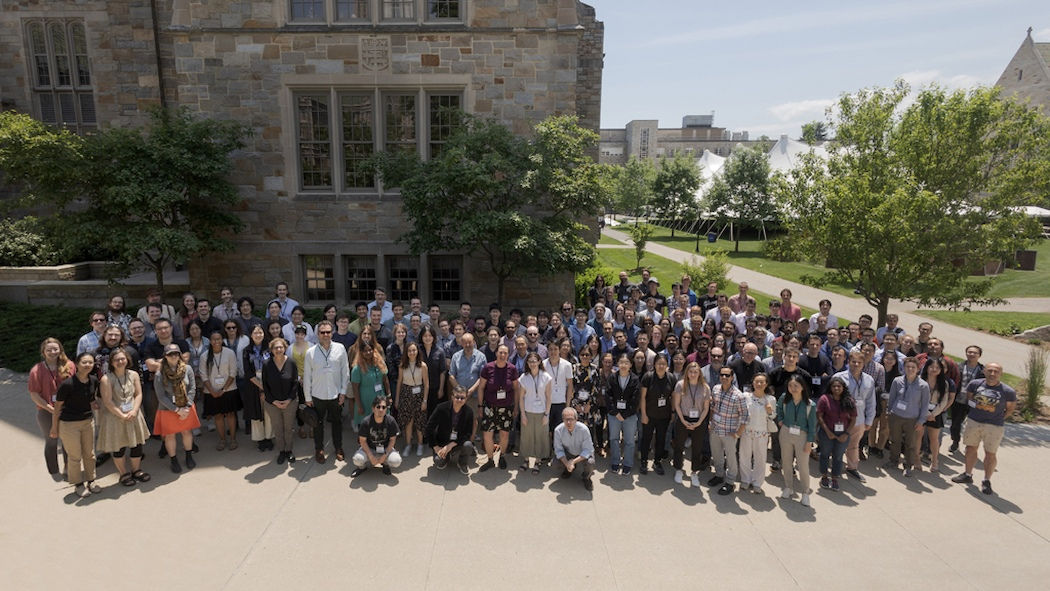Largest meeting of international climate modeling conference held at Boston College
By Stephanie M. McPherson
The world’s leading conference on understanding cloud feedback, a key variable in climate change predictions, was hosted by the Schiller Institute in June 2024.
“The goal is to better understand the roles of clouds in climate science in general,” says Yi Ming, Institute Professor of Climate Science and Society and one of the organizers of the event. Clouds reflect sunlight back to space – the more clouds, the less heat and radiation gets to the ground and vice versa. Cloud cover will be affected by climate change as weather patterns change, which will in turn affect climate as more or less sunlight reaches the ground. But how many clouds there will be in the sky in the future is a tricky thing to predict.
“Any given time, one third of the earth’s surface is covered by clouds. As you change the climate, clouds will change along the way, too,” says Ming. “That's what we call cloud feedback. If you look at the source of uncertainty in the future climate model projection, cloud feedback is simply the biggest.”
Members of the Cloud Feedback Model Intercomparison Project (CFMiP) have been meeting yearly in locations around the world to discuss their progress and share new ideas. This year’s conference, held at Boston College’s 245 Beacon St building and hosted by the Schiller Institute, was the largest to date with an attendance of nearly 160 scientists – from physicists to environmental and atmospheric science to representatives from NASA, DOE, NOAA, and the European Space Agency.
“It started off maybe with only 30 or 40 people who were researching these topics of clouds and circulation, and it's expanded — we had almost 160 people register for the conference this year,” says Clare Singer, NOAA C&GC Postdoctoral Scholar who is studying in part under Ming, and was his “second-in-command” for conference planning.
“It is a very diverse set of backgrounds. At the end of the day, it's applied science, so we're trying to solve the climate puzzle. It is truly interdisciplinary in that sense,” says Ming.
Ming and his co-organizers began working with Event Management and Dining at BC over eight months prior to the event to make sure the conference went off without a hitch. They were able to offer a unique option to conference goers of lodging at BC, thanks to work from the Provost’s Office and Schiller Institute staff. Aside from three days of talks and about 100 poster presentations, the team also arranged a trip to Fenway to see the Red Sox play, and a celebratory dinner.
The opportunities for researchers to talk in structured and unstructured settings allowed for freewheeling conversations about research methods, model architecture and more.
“There are so many new young faces floating around. I was especially heartened by that,” says Ming. “The most important reason for getting people together in the lecture hall is to bounce ideas off each other, to talk about the latest research result in a way that people can make critiques. People can sort of poke at each other in a good way to check on each other's work.”
Topics covered included how parts of the world are warming at different paces than projected, and how that affects understanding of cloud feedback. This has also affected differences in projected precipitation.
The knowledge shared at this conference has already started making its way into the broader research community. Ming’s keynote at a recent conference in Puerto Rico mentioned the discrepancies in projected precipitation versus the reality, and how new modeling techniques could help resolve that.
“How hard will it be for doing adaptation work if you don't know whether you're going to have more rain or less rain, more floods or droughts?” says Ming.
Previous conferences have been held in places like Sorbonne University in Paris and the University of Tokyo. This year’s conference at Schiller exceeded already high expectations. Yi hopes that when the younger cohort of attendees thinks about their academic future they’ll remember the facilities, support and enthusiasm climate science enjoys at BC.
“At Schiller we're trying to use climate change as the linchpin for initiating and sustaining interdisciplinary work. The three pillars – the environment, energy and health – are all intricately connected with climate change,” says Ming. “And this conference is at the heart of climate science.”



